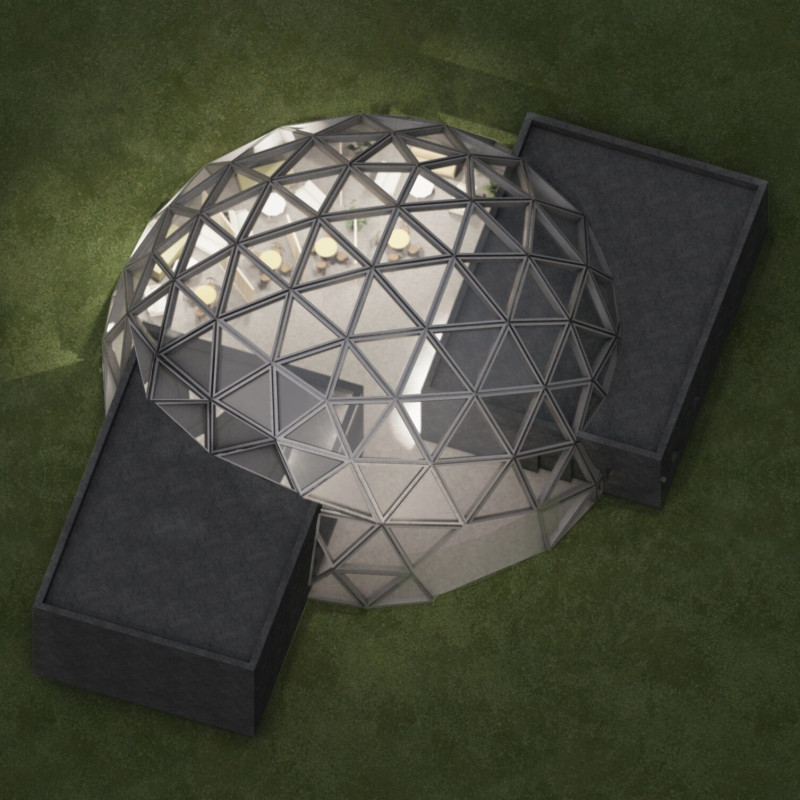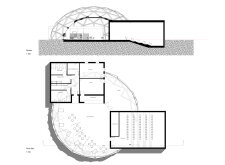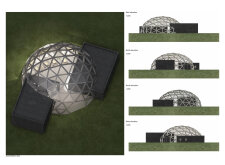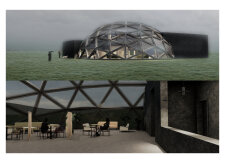5 key facts about this project
The Iceland Movie Pavilion presents a thoughtful response to the unique landscapes of Iceland, reflecting its dualities of fire and ice. Located in a striking natural environment, the pavilion serves as both a venue for films and a community space for gatherings. The design concept integrates elements of the surrounding landscape, blending functionality with a strong sense of place.
Structural Composition
The pavilion features two solid forms that meet at a central glass dome. One block contains the main movie hall, designed for an engaging cinematic experience, while the other hosts essential amenities like a ticket office, bar, kitchen, staff rooms, and toilets. This separation of functions enhances operational efficiency and provides visitors with a coherent way to navigate the building.
Material Context
A notable aspect of the pavilion is its exterior, clad in basalt, a local volcanic stone. This choice connects the structure to Iceland's geology while also supporting sustainability by reducing the need for transported materials. The glass dome, made of triangular panels, contrasts with the heavy solidity of the blocks. It allows natural light to enter the space, inviting the outside environment in and creating a light-filled atmosphere.
Spatial Dynamics
The layout is designed to be flexible, featuring movable walls in the exhibition area that allow for various activities. This adaptability enables the pavilion to host different types of events, from film screenings to community gatherings. The flow between spaces encourages interaction among visitors while also providing areas for reflection and quiet.
Environmental Integration
The design takes into account Iceland's extreme daylight variations. The dome's structure lets in ample sunlight and offers views of the night sky, including the northern lights during the winter. This element creates a strong connection between the interior space and the natural phenomenon outside, allowing visitors to feel part of the surrounding landscape.
The combination of solid forms and a transparent dome creates a building that reflects the complexities of Iceland's environment. It is a functional space shaped by its geography, enhancing the experience of both the architecture and the natural world.






















































